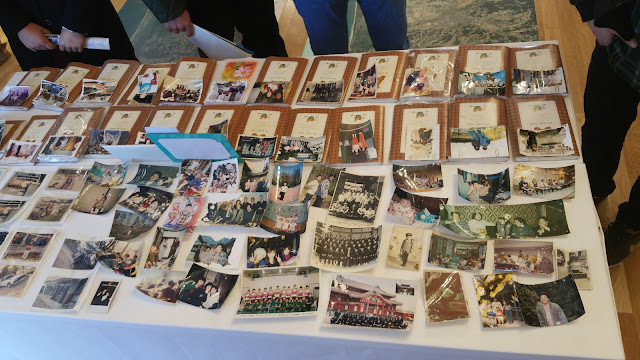On the last day of the Fukushima tour we visited the city of Soma. Soma is on the eastern coast of Japan, and so it was severely damaged by the 2011 earthquake, tsunami, and nuclear reactor damage. In Soma, we visited a memorial center by the ocean.
At the memorial center we watched a presentation telling the story of one of the local fishermen. The story was very sad. It told how when the fishermen heard about the tsunami they were concerned about their boats, and they left their homes to bring the boats away from shore.
After the tsunami had passed, some boats were saved, but many of the fishermen lost their families. The title of the presentation was "The most important thing", and told how after the Tsunami the surviving fishermen realized how much more important their families had been than their boats.
The memorial center had copies of newspapers and photographs of the deceased. Before I went on this trip I was only aware of the damage from the Fukushima reactor, but to the people of Soma, the tsunami was the most devastating part of the disaster.
On the memorial below there is a beer, a bottle of coke, and three cans of coffee.
These are some photographs of small playground that I took by the memorial center. I didn't get to ask, but it looks like they were damaged in the Tsunami 5 years ago, and have been untouched since.
This may not be a traditional memorial, but it tells of the destruction of the tsunami and how some parts of Japan are still rebuilding from the disaster.












































